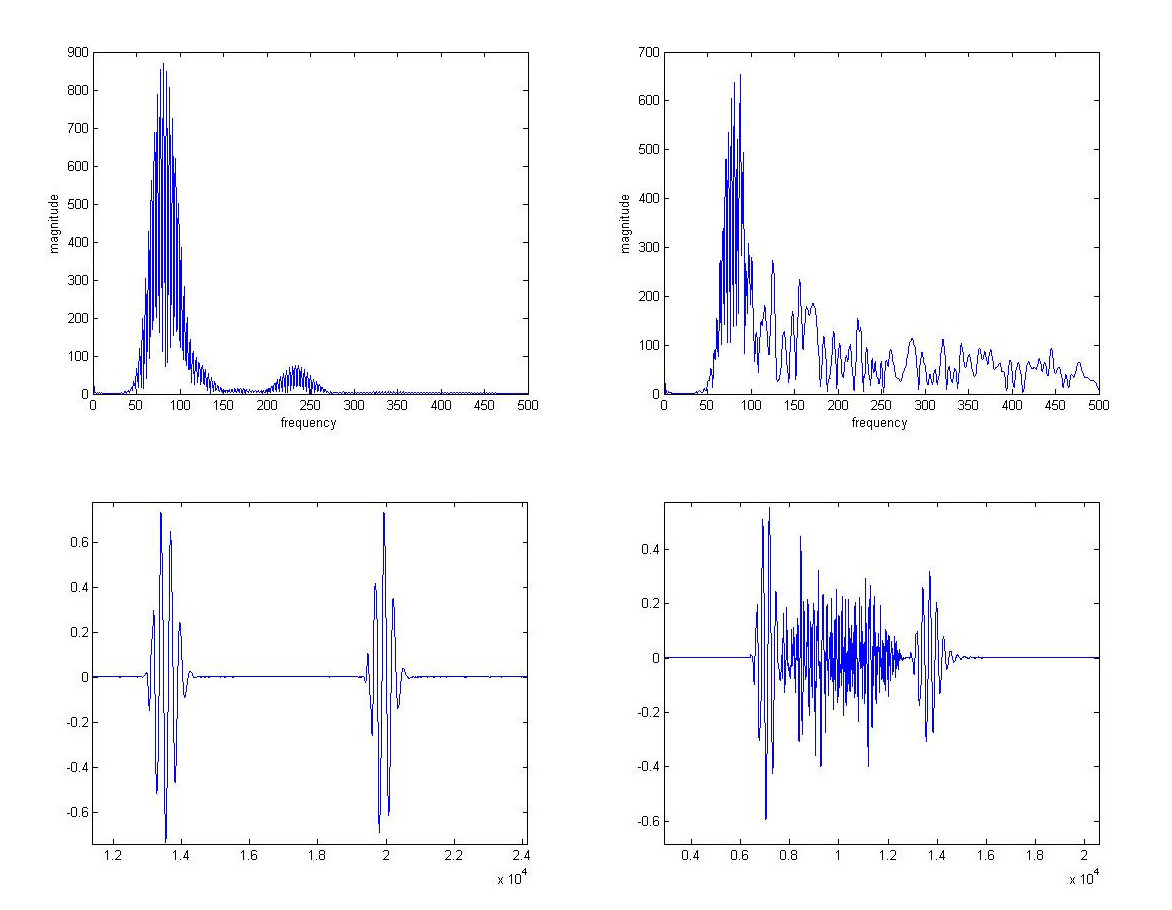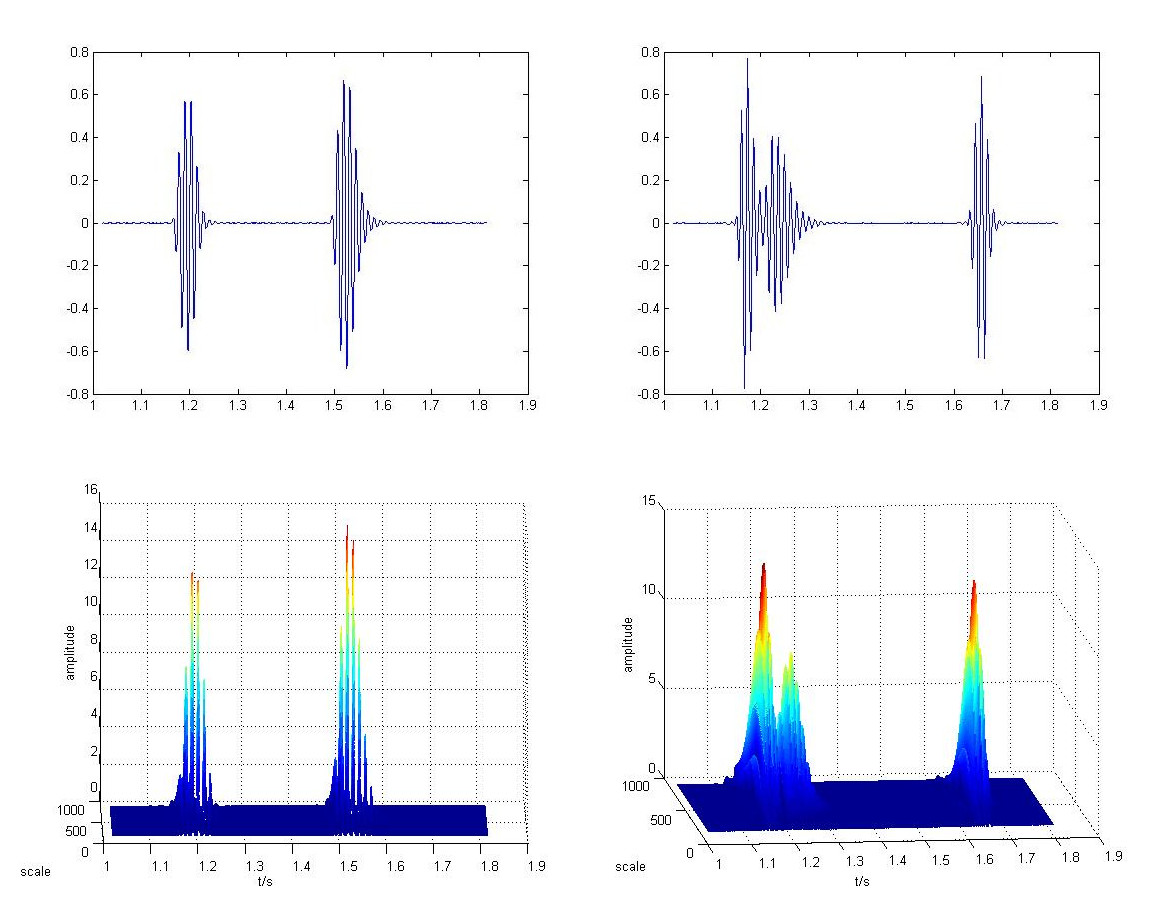Projects:2014S1-19 Analysis Of Heart Sound Signals using the Wavelet Transform
Contents
Project Information
Project Introduction
Auscultation with a stethoscope is one of the most important tools in diagnosing the heart diseases. However diagnosing the heart disease through auscultation is subjective.It depends largely on hearing ability and skills of physicians. Our project research is to develop a standard heart sounds diagnosing tools which is able to recognize the characteristic of the heart sounds and able to classify the heart sounds automatically.
Modelling of heart sound
Heart sounds provides information about people's physical conditions. The first heart sounds (S1) occurs at the beginning of ventricular contraction during the closure of the mitral and tricuspid valves,which indicates the beginning of ventricular systole. The second heart sound (S2)marks the end of ventricular systole and the begining of ventricular relaxation, following the closure of the aortic and the pulmonary valves. The identification of systole and diastoel is important in determing other heart sound and murmurs. Heart murmurs also may be present in the phonocardiogram (PCG), are generally assocated with abnormal function of the cardiac valve, except for the innocent murmurs which may occur during systole in young people with normal hearts. The murmur can be classified as systolic murmurs and diastolic murmurs according to their production phase.
Different methods
FFT
As the PCG signals are complex signals that are very difficult to analyze visually, they can be transformed to frequency domain to analyze. However heart sound signals are non-stationary signals whcih means the time components are important as well, therefore FFT cannot indicates some sudden situations.
 The FFT (Fast Fourier Transform) can provide a basic understanding of the frequency contents of the heart sounds. However, FFT analysis remains of limited values if the stationary assumption of the signal is violated. Since heart sounds exhibit marked changes with time and frequency, they are therefore classified as non - stationary signals. To understand the exact feature of such signals, it is thus important, to study their time – frequency characteristics.
The FFT (Fast Fourier Transform) can provide a basic understanding of the frequency contents of the heart sounds. However, FFT analysis remains of limited values if the stationary assumption of the signal is violated. Since heart sounds exhibit marked changes with time and frequency, they are therefore classified as non - stationary signals. To understand the exact feature of such signals, it is thus important, to study their time – frequency characteristics.
STFT
The STFT is obtained from the usual FT by multiplying the time signal x(t) by an appropriate sliding time window w(t). It provides some information about time and frequencies that a signal event occurs. However, one can only obtain this information with limited precision, which is determined by the size of the window,also, it has strict limitations on time-frequency resolution.
CWT
The wavelet transform is also used to analyze the heart sound in time and frequency domains. It uses narrow windows when observing the high frequency and automatically uses wide window when observing the low frequency. This particular property of wavelet generates good time resolution at high frequency and good frequency resolution at low frequency.

conclusion
Different features can be found through the spectrogram.
 normal heart sounds
normal heart sounds
 aortic stenosis heart sounds
aortic stenosis heart sounds
 aortic regurgitation heart sounds
aortic regurgitation heart sounds

from the table and the spectrogram we can see that the location of murmurs can be regarded as feature to distinguish normal and abnormal heart sounds.
the amplitude ratio of the first heart sounds (S1) and the second heart sounds (S2) can also be considered as features because these three kinds of heart sounds have different amplitude ratio and these ratio range do not have overlap.
The measurement of the time difference between the A2 and P2 components in sound S2, the number of major components of sounds S1 and S2 and the frequency range and duration for all these components and sounds can be accurately achieved for CWT simultaneously as was clearly illustrated. It is found that WT is capable of detecting the four major components of the first sound S1 and the two components (the aortic valve component A2 and the pulmonary valve component P2) of the second sound S2 of a normal PCG signal. FFT can display the frequencies of the components A2 and P2 but cannot display the time delay between them.
future work
Currently, the analysed heart sound signal is on the premise of having certain disease. In the future work, the research aim at dealing with random heart beats. After applying the wavelet transform to determine whether the heart beat is health and if not what disease it is attacked.More features are required to develop a reliable tool that can recognize the characteristic of the heart sounds and able to classify the heart sounds automatically.
Team
Group members
XiaoBo Xue
Jie Ren
Yue Liang
Supervisors
Brian NG
Jagan Mazumdar